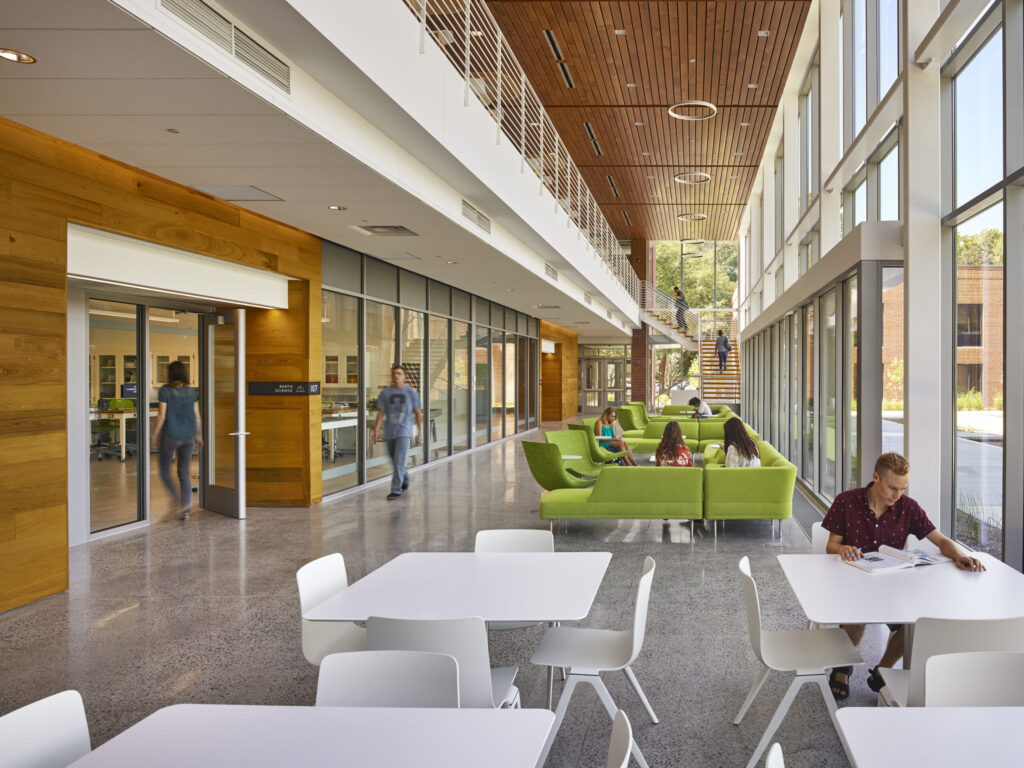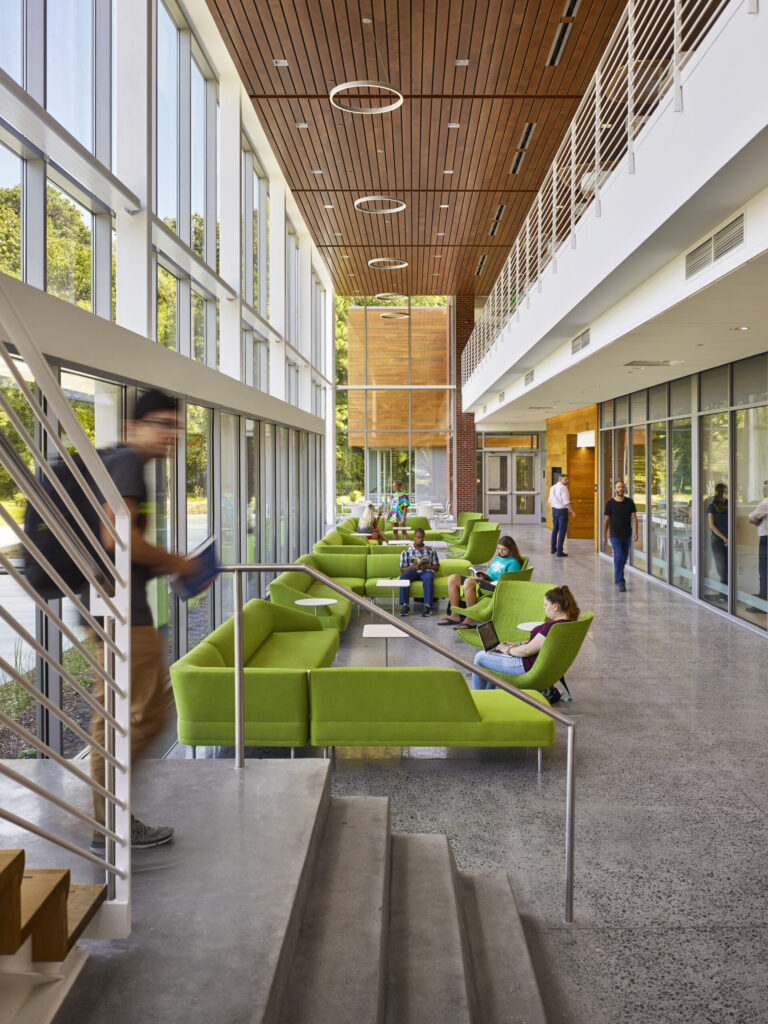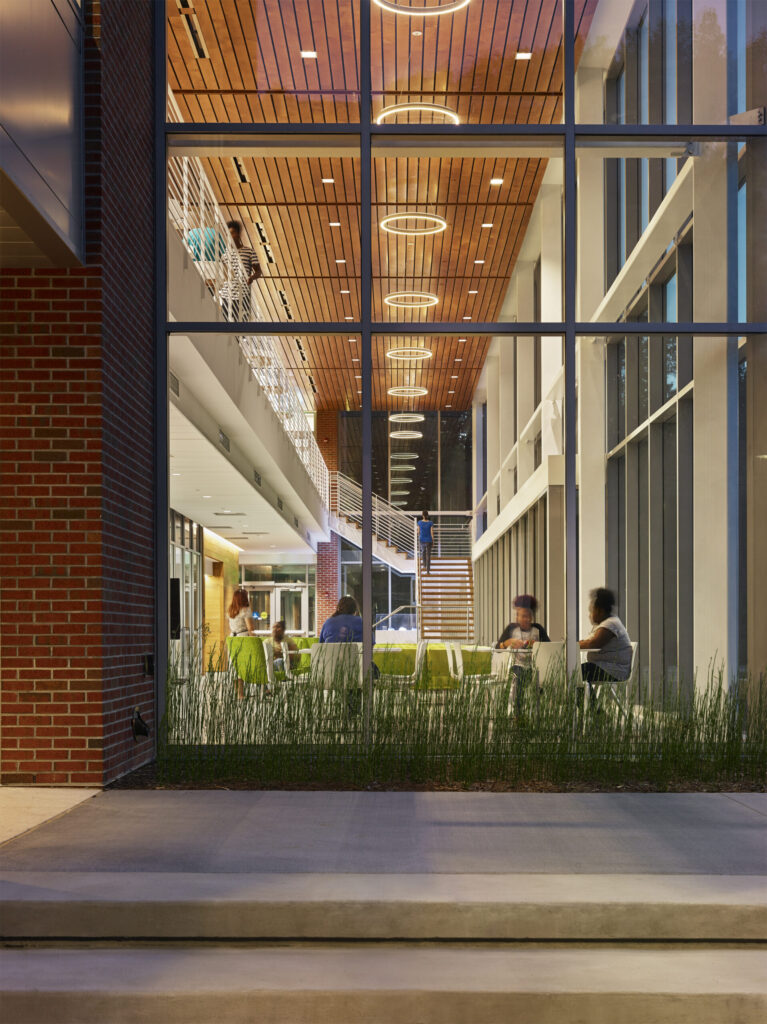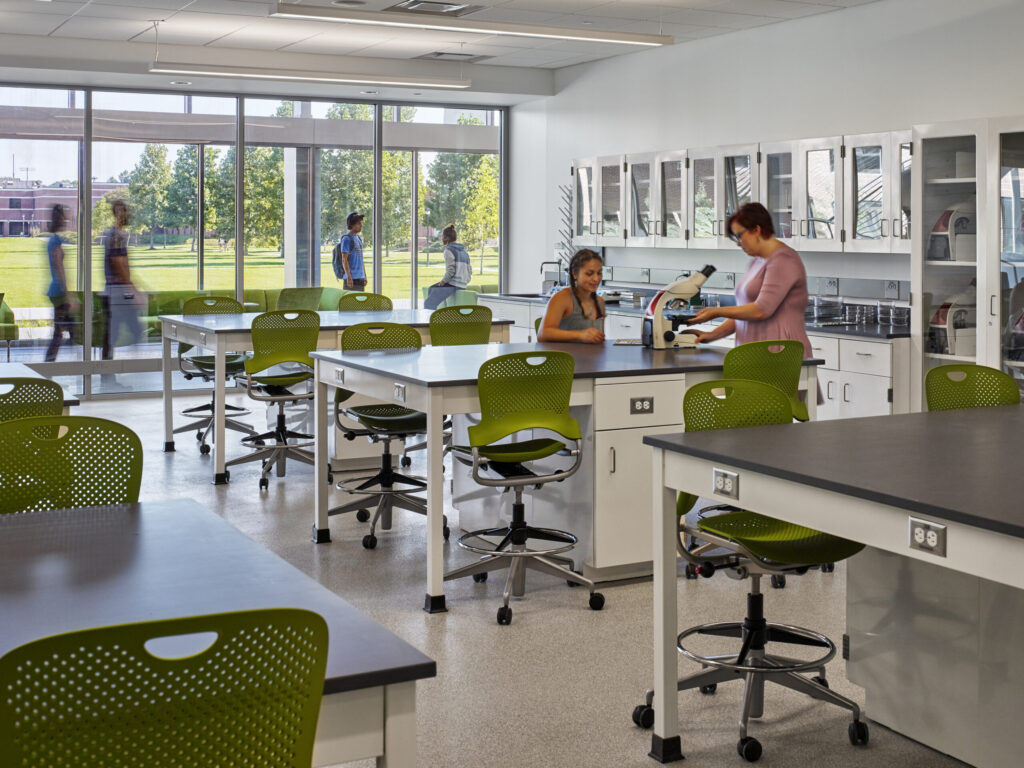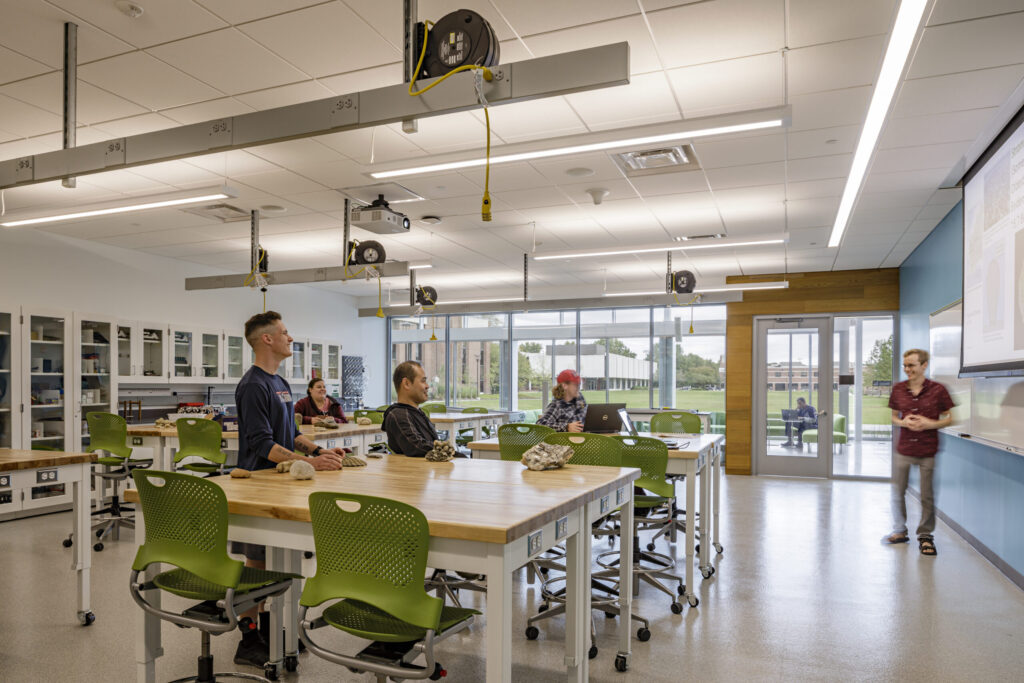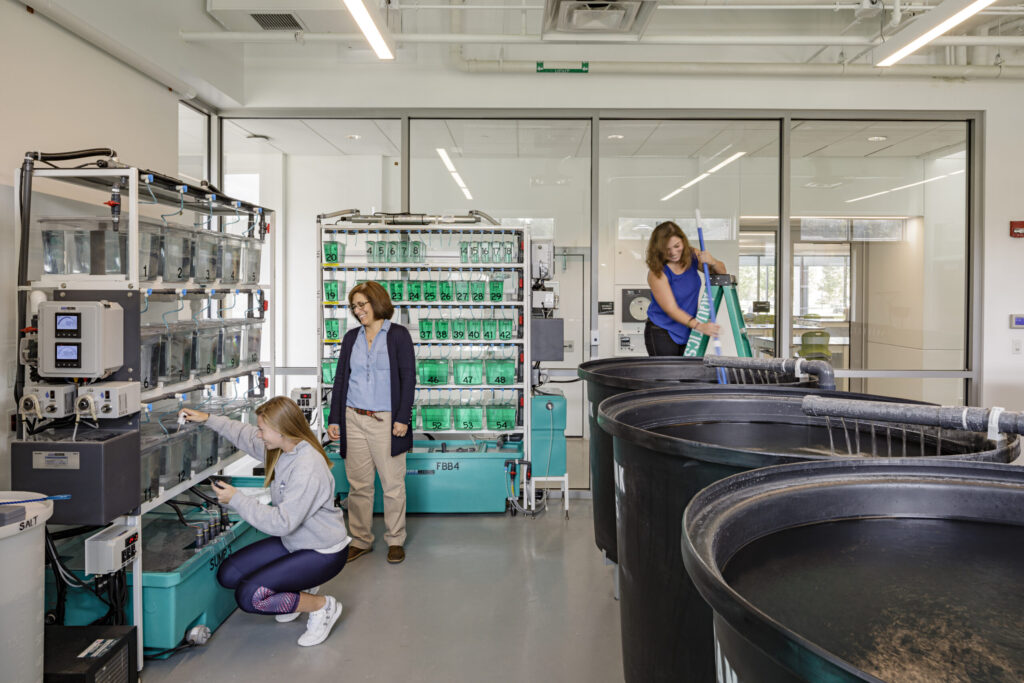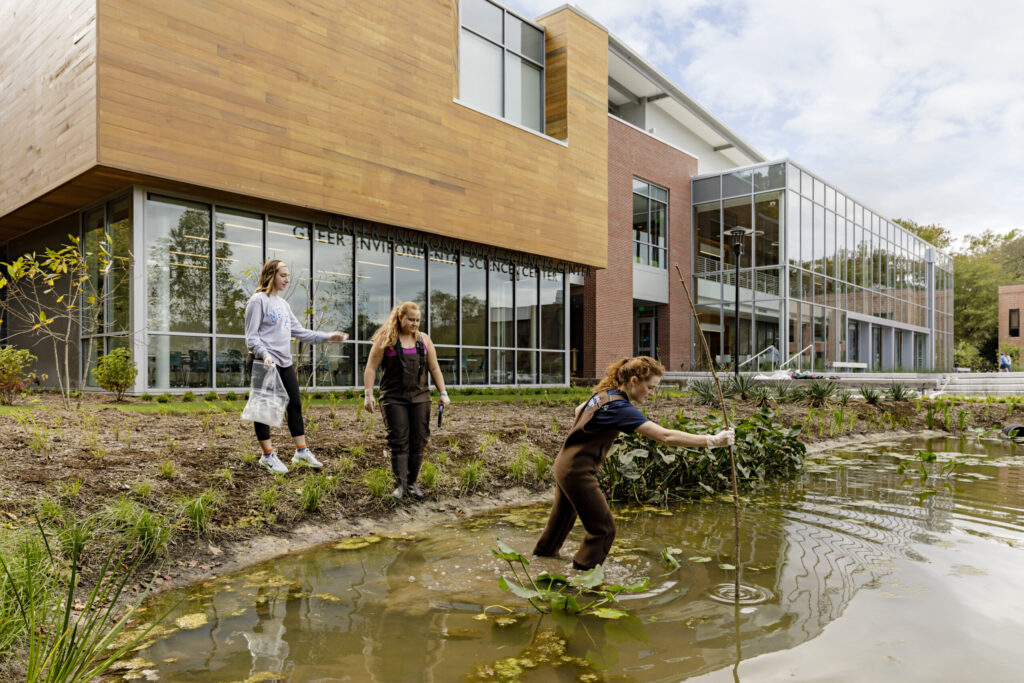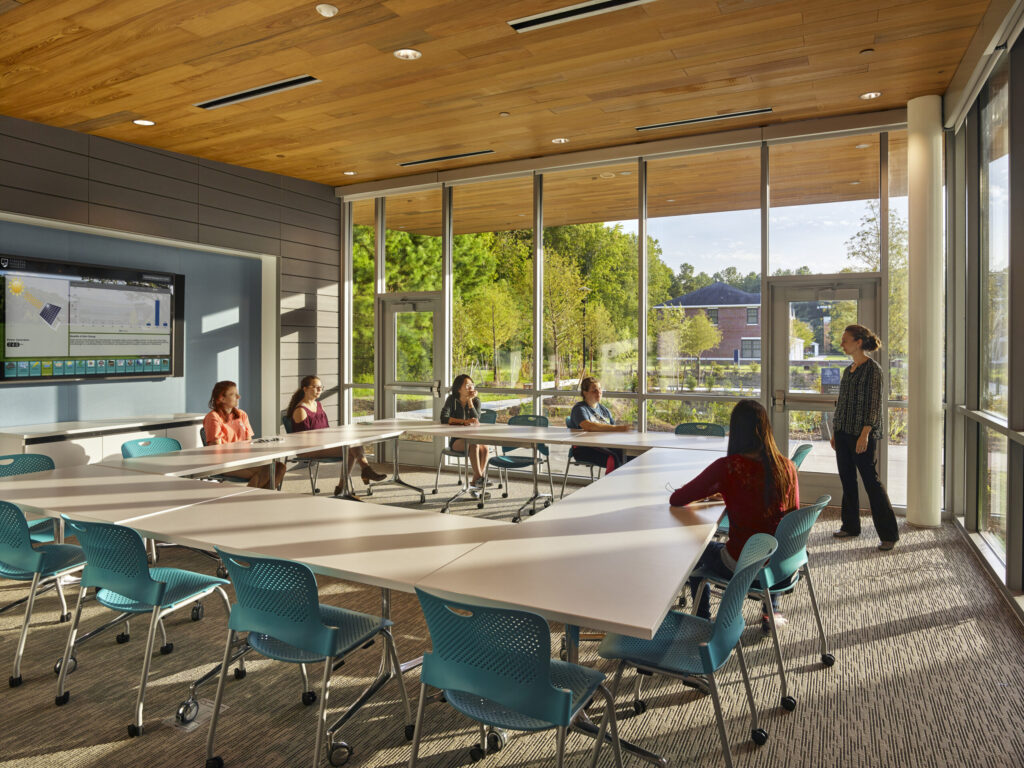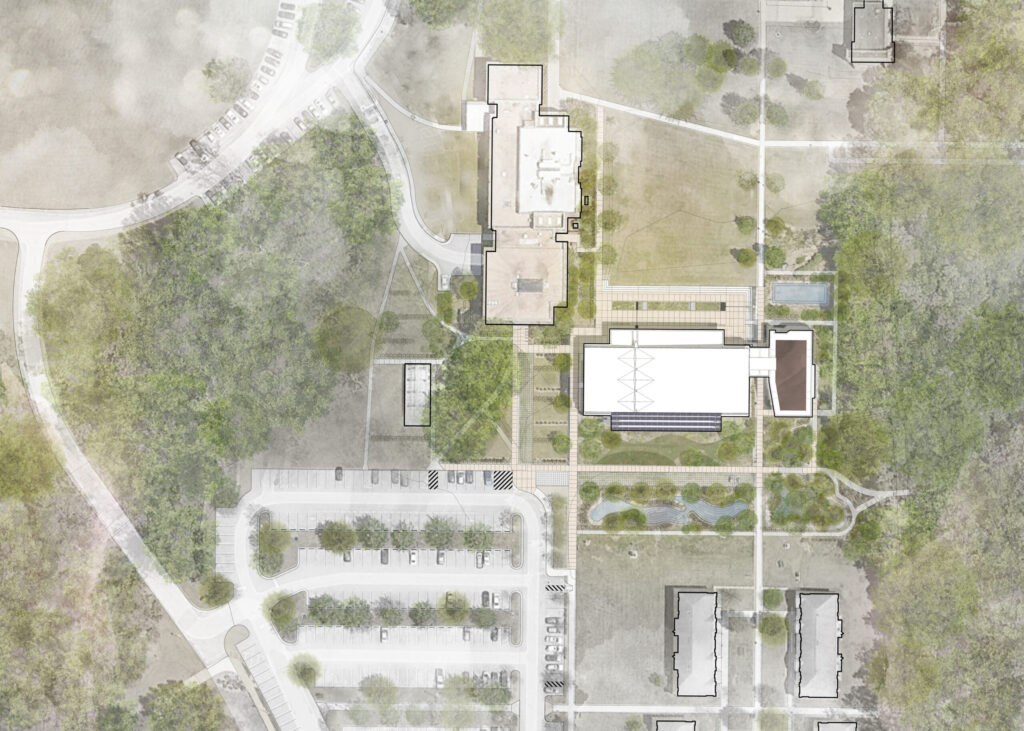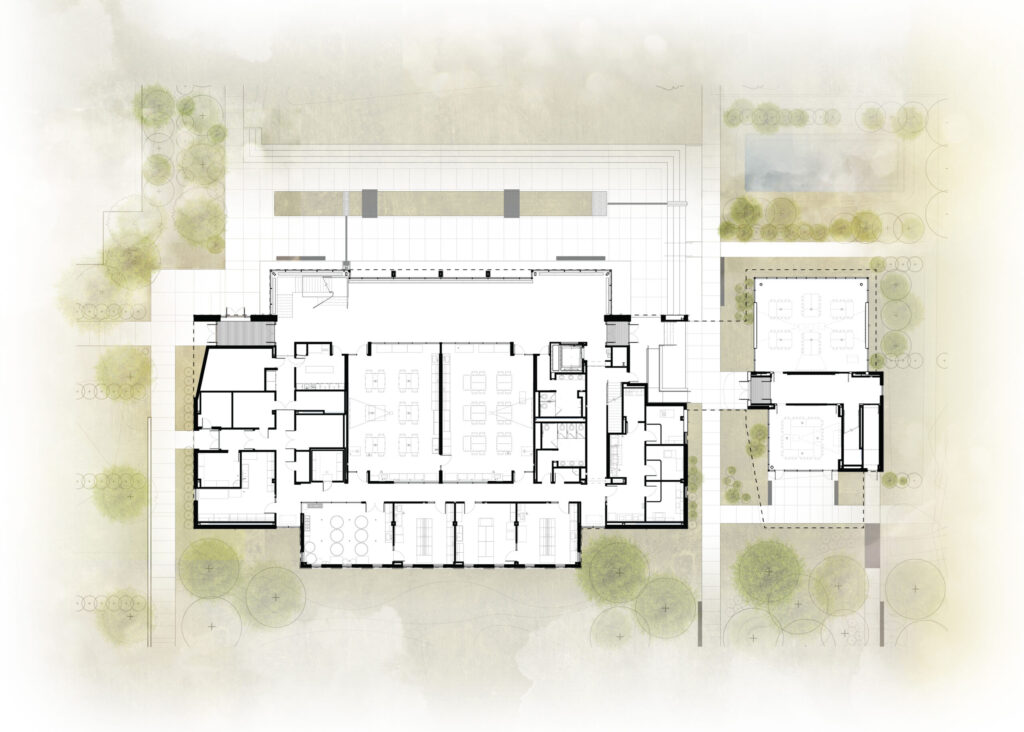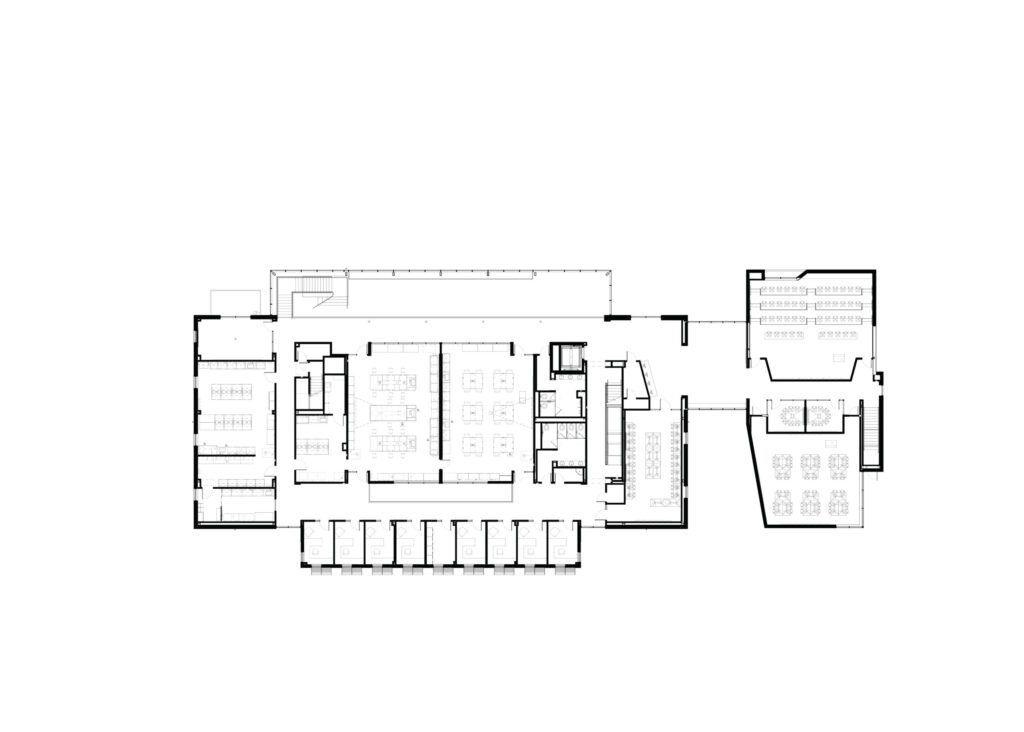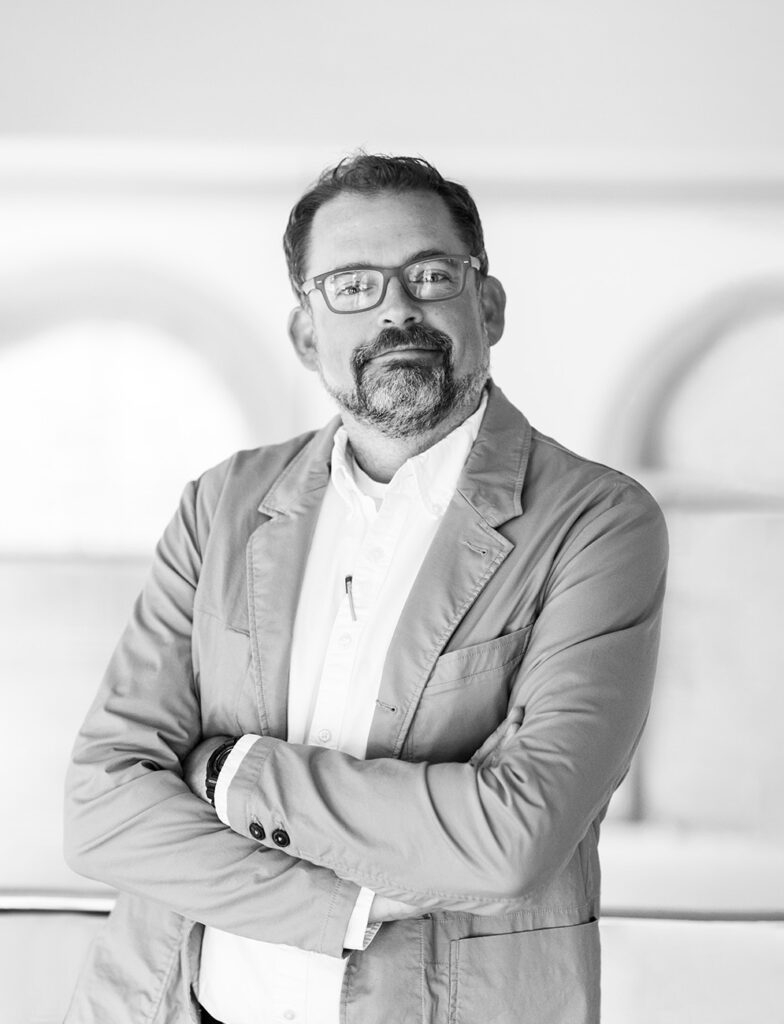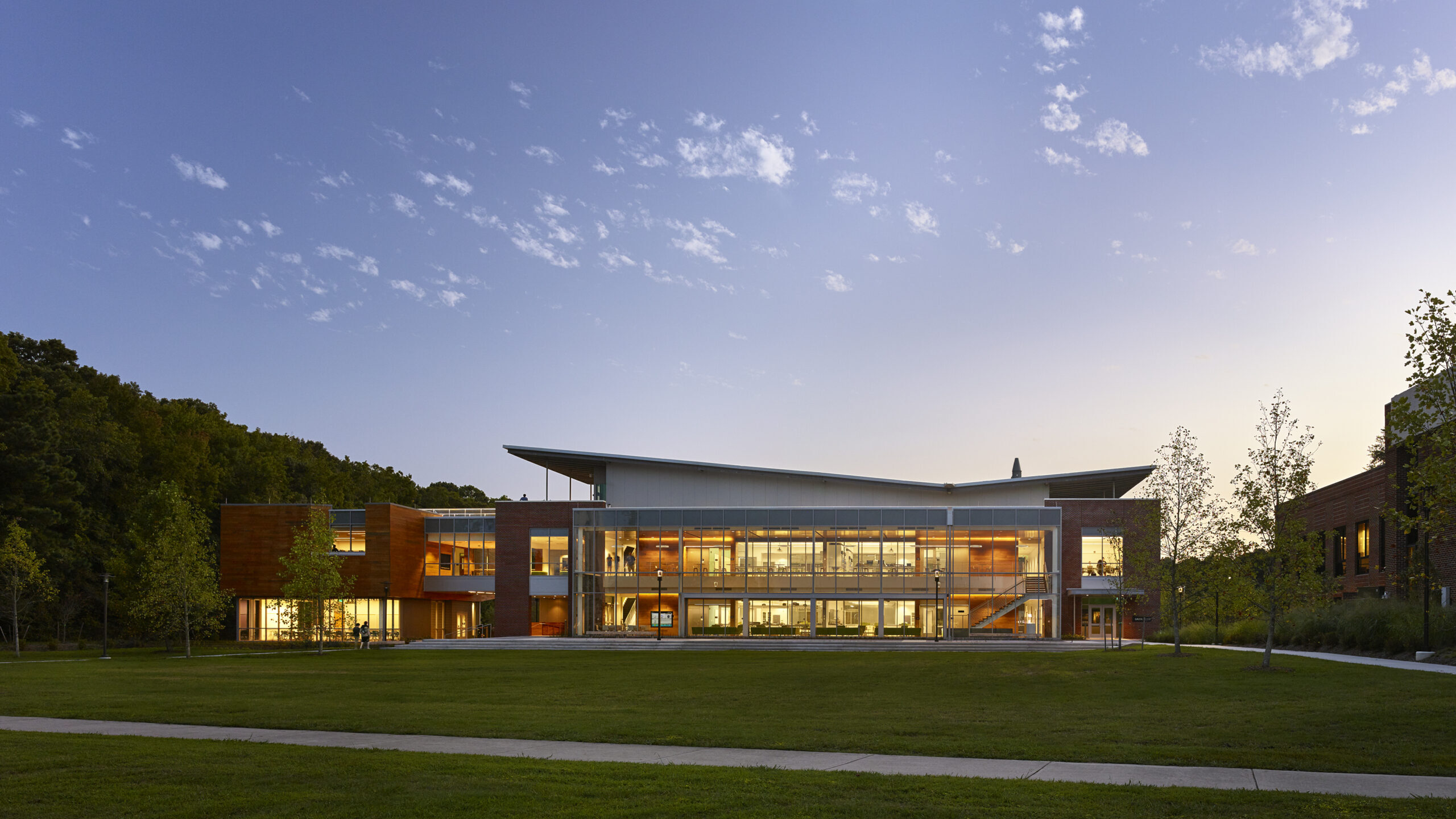
Virginia Wesleyan University Greer Environmental Sciences Center
The Greer Environmental Sciences Center’s spatial and visual connections help create an inspiring sense of place on the VWU campus. Through its location and landscaping, the building connects students in powerful ways to their local ecological community.
Project Details
- Client: Virginia Wesleyan University
- Location: Norfolk, VA
- Scope: New Construction
- Completion: 2017
- Size: 40,000 SF
- Performance: LEED Gold | EUI 49 kBTU/sf/year (measured) | 45% reduction (regional CBECs 2003 College/University baseline)
The Greer Environmental Sciences Center elevates Virginia Wesleyan University’s commitment to environmental sustainability and advocacy for a thriving, cross-disciplinary sciences program. Occupying a prime location on the main quad, the Center connects students to the building’s dynamic program and natural context. Designed to honor former President Greer’s commitment to environmental sustainability, the building facilitates hands-on learning opportunities, catalyzes regional research partnerships, and encourages environmental stewardship.
The Greer Center creates an immersive science experience for everyone on campus, not just science majors. The design highlights the teaching labs with a fully transparent facade that faces the quad. Adjacent to each teaching lab are research spaces designed to support specialized investigations. Carefully orchestrated transparency between key spaces allows students and faculty to be connected to each other and to the life of the building.
This LEED Gold building exemplifies the “building as a teaching tool” philosophy. Educational signage explains the palette of sustainable materials while a building dashboard with real-time data visualizations displays the effectiveness of the geothermal heat exchangers and solar photovoltaic panels. Sustainable features integrated in the constructed wetlands and on the green roof are accessible to students who study local flora and fauna and monitor the building’s use of energy and water. Vegetated bioretention basins offer habitats for birds and wildlife while treating water runoff in engaging ways. Through the Center’s revealed natural and building systems, students develop awareness of the interconnections of natural systems and the importance of caring for local watersheds and animal habitats.
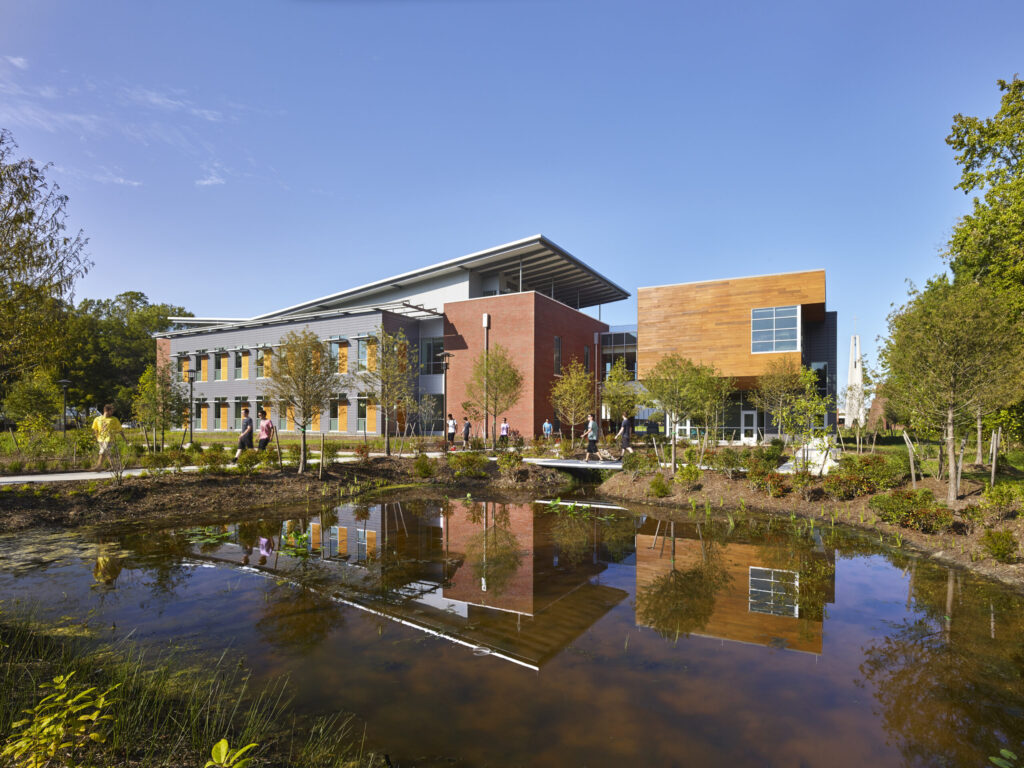
Virginia Wesleyan University Greer Environmental Sciences Center, VMDO Architects + Enlarge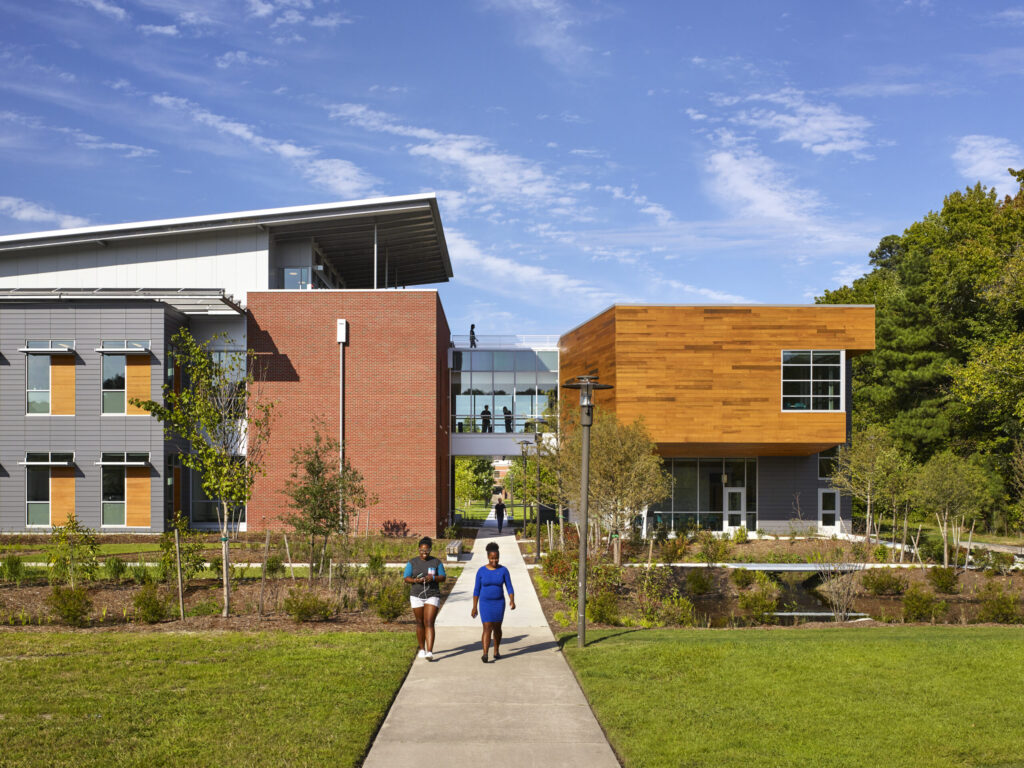
Walkway from Southwest + Enlarge
We are using this facility to promote an ethic of sustainability on our campus. In classes and casual interactions, students and visitors learn more about sustainability and the environment. This allows us additional opportunities to have conversations about what they can do in their everyday lives to be good stewards. This facility has also allowed us to attract students in this field, who might otherwise have gone to a different university. Once they are here, we aim to provide a transformative education, using the building’s educational and sustainable features.
Collaborators
MEP Engineering – Dunlap & Partners
Structural Engineering – Fox & Associates
Civil Engineering – MSA
Landscape Architecture – O’Shea + Wilson Siteworks
Contractor – Hourigan Construction
Project Photography – Alan Karchmer and Lincoln Barbour
Additional Drawings

Sustainable Building Features
Sustainability
The LEED Gold Center teaches important principles of environmental stewardship related to the interconnection of natural systems, the importance of caring for local watersheds, and the responsibility to combat climate change.
Strategies that conserve energy, water, and material resources include:
- A ground source heat exchange system for heating, cooling, and domestic hot water
- An enthalpy wheel that recovers heat from exhaust air in the winter, and dehumidifies incoming ventilation air in the summer
- Passive design strategies for energy conservation including proper building orientation, shading, and a high performance building envelope
- Optimized daylighting complemented by LED electric lighting designed to protect the night sky
- Filtered fume hoods that clean and recirculate air in labs, conserving energy
- A vegetated “green” roof
- A photovoltaic array that feeds carbon-free power into the building
- Low-flow fixtures and waterless urinals, which use 40% less water compared to conventional systems
- Use of “sinker cypress” – timber reclaimed from the bottom of the Mississippi River – on both the exterior and interior public spaces of the building
Read More
Awards Received
- 2023 - Climate Champion, USGBC Virginia
- 2021 - AIA Education Facility Design Award, AIA Committee on Architecture for Education
- 2020 - Architecture Merit Award, AIA Central Virginia
- 2020 - Landscape Architecture Merit Award, ASLA Virginia
- 2020 - Interior Design Excellence Award: First Place in Sustainable Design, IIDA Virginia / West Virginia
- 2019 - Virginia Environments Award, USGBC Virginia
- 2018 - Excellence in Architecture Merit Award, Society of College and University Planners (SCUP)
- 2018 - Excellence in Design Awards: Best Educational Building, Hampton Roads Association for Commercial Real Estate
- 2018 - Honor Award of Excellence, Associated Builders and Contractors - Virginia Chapter
- 2017 - Award of Excellence, DBIA Hampton Roads
